Artículos SCI
2017
2017
Materiales Nanoestructurados y Microestructura
The role of cobalt hydroxide in deactivation of thin film Co-based catalysts for sodium borohydride hydrolysis
Paladini, M; Arzac, GM; Godinho, V; Hufschmidt, D; de Haro, MCJ; Beltran, AM; Fernandez, AApplied Catalysis B-Environmental, 210 (2017) 342-351
Show abstract ▽
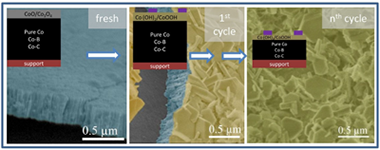
Deactivation of a Co catalyst prepared as thin film by magnetron sputtering was studied for the sodium borohydride (SB) hydrolysis reaction under different conditions. Under high SB concentration in single run experiments, the formation of a B-O passivating layer was observed after 1.5 and 24 h use. This layer was not responsible for the catalyst deactivation. Instead, a peeling-off mechanism produced the loss of cobalt. This peeling-off mechanism was further studied in cycling experiments (14 cycles) under low SB concentrations. Ex-situ study of catalyst surface after use and solid reaction products (precipitates) was performed by X-Ray photoelectron spectroscopy (XPS), transmission electron microscopy (TEM) and scanning transmission electron microscopy (STEM). The presence of cobalt hydroxide and oxyhydroxide was detected as major components on the catalyst surface after use and as precipitates in the supernatant solutions after washing. Cobalt borate, cobalt carbonate and oxycarbonate were also formed but in lesser amounts. These oxidized cobalt species were formed and further detached from the catalyst at the end of the reaction and/or during catalyst washing by decomposition of the unstable in-situ formed cobalt boride. Leaching of cobalt soluble species was negligible. Thin film mechanical detachment was also found but in a smaller extent. To study the influence of catalyst composition on deactivation processes, cycling experiments were performed with Co-B and Co-C catalysts, also prepared as thin films. We found that the deactivation mechanism proposed by us for the pure Co catalyst also occurred for a different pure Co (prepared at higher pressure) and the Co-B and Co-C samples in our experimental conditions.
Agosto, 2017 | DOI: 10.1016/j.apcatb.2017.04.005
Materiales Coloidales
Crystal structure, NIR luminescence and X-ray computed tomography of Nd3+:Ba0.3Lu0.7F2.7 nanospheres
Gonzalez-Mancebo, D; Becerro, AI; Cantelar, E; Cusso, F; Briat, A; Boyer, D; Ocana, MDalton Transactions, 46 (2017) 6580-6587
Show abstract ▽
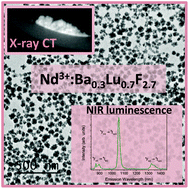
Uniform, hydrophilic 50 nm diameter Nd3+-doped Ba0.3Lu0.7F2.7 nanospheres are synthesized at 120 degrees C using a singular one-pot method based on the use of ethylene glycol as solvent, in the absence of any additive. The composition and crystal structure of the undoped material are analyzed in detail using ICP and XRD, which reveals a BaF2 cubic crystal structure that is able to incorporate 70 mol% of Lu ions. This finding contrasts with the reported phase diagram of the system, where the maximum solubility is around 30 mol% Lu. XRD proves as well that the Ba0.3Lu0.7F2.7 structure is able to incorporate Nd3+ ions up to, at least 10 mol%, without altering the uniform particles morphology. The Nd-doped particles exhibit near-infrared luminescence when excited at 810 nm. The maximum emission intensity with the minimum concentration quenching effect is obtained at 1.5% Nd doping level. X-ray computed tomography experiments are carried out on powder samples of the latter composition. The sample significantly absorbs X-ray photons, thus demonstrating that the Nd3+-doped Ba0.3Lu0.7F2.7 nanospheres are good candidates as contrast agents in computed tomography.
Agosto, 2017 | DOI: 10.1039/c7dt00453b
Materiales y Procesos Catalíticos de Interés Ambiental y Energético
Cobalt Carbide Identified as Catalytic Site for the Dehydrogenation of Ethanol to Acetaldehyde
A. Rodríguez-Gómez; J.P. Holgado; A. CaballeroACS Catalysis, 7 (2017) 5243-5247
Show abstract ▽
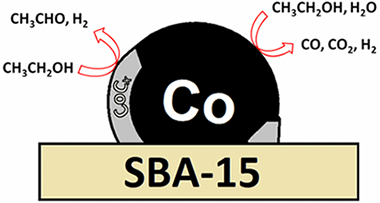
Two cobalt catalysts, Co/SBA-15 and Co/SiO2, have been studied in steam reforming of ethanol (SRE). Besides the steam reforming products, ethoxide dehydrogenation to acetaldehyde is observed as one of the main reactions. Although by hydrogen treatment cobalt is reduced to the metallic state, under SRE conditions, a phase appears that has been identified as cobalt carbide and correlates with acetaldehyde production. These findings provide insights about the catalytic sites, for SRE, in cobalt catalysts. Comparison with previous results shows that these conclusions are not translatable to other cobalt catalysts, stressing the importance of the support on the catalytic behavior of cobalt.
Julio, 2017 | DOI: 10.1021/acscatal.7b01348
Materiales de Diseño para la Energía y Medioambiente
Cs+ immobilization by designed micaceous adsorbent under subcritical conditions
Osuna, FJ; Cota, A; Pavon, E; Pazos, MC; Alba, MDApplied Clay Science, 143 (2017) 293-299
Show abstract ▽
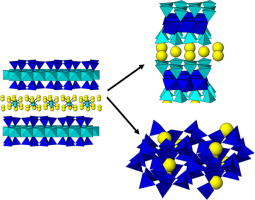
The adsorption of Cs+ by clay minerals is a complicate process, being cation exchange and frayed-edge sites the major mechanisms that govern it. However, environmental variables have a significant impact on the process. In this work, the influence of the temperature and time in the cesium adsorption capacity of Na-Mica-n (n = 2 and 4) have been explored under subcritical conditions. Those synthetic micas were able to immobilize cations Cs+ combining adsorption at nonspecific sites, at specific sites and chemical reaction. The distribution constant of Cs+ was larger in the Na-Mica-2 denoting a higher concentration of specific adsorption sites when layer charge decreased.
Julio, 2017 | DOI: 10.1016/j.clay.2017.03.041
Nanotecnología en Superficies y Plasma - Tribología y Protección de Superficies
Plasma assisted deposition of single and multistacked TiO2 hierarchical nanotube photoanodes
Filippin, AN; Sanchez-Valencia, JR; Idigoras, J; Rojas, TC; Barranco, A; Anta, JA; Borras, ANanoscale, 9 (2017) 8133-8141
Show abstract ▽
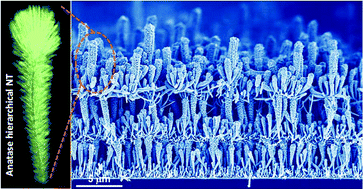
We present herein an evolved methodology for the growth of nanocrystalline hierarchical nanotubes combining physical vapor deposition of organic nanowires (ONWs) and plasma enhanced chemical vacuum deposition of anatase TiO2 layers. The ONWs act as vacuum removable 1D and 3D templates, with the whole process occurring at temperatures ranging from RT to 250 degrees C. As a result, a high density of hierarchical nanotubes with tunable diameter, length and tailored wall microstructures are formed on a variety of processable substrates as metal and metal oxide films or nanoparticles including transparent conductive oxides. The reiteration of the process leads to the development of an unprecedented 3D nanoarchitecture formed by stacking the layers of hierarchical TiO2 nanotubes. As a proof of concept, we present the superior performance of the 3D nanoarchitecture as a photoanode within an excitonic solar cell with efficiencies as high as 4.69% for a nominal thickness of the anatase layer below 2.75 mu m. Mechanical stability and straightforward implementation in devices are demonstrated at the same time. The process is extendable to other functional oxides fabricated by plasma-assisted methods with readily available applications in energy harvesting and storage, catalysis and nanosensing.
Julio, 2017 | DOI: 10.1039/c7nr00923b
- ‹ anterior
- 189 of 420
- siguiente ›














